If a symmetrical bi-concave thin lens is cut into two identical halves, and they are placed in different ways as shown, then 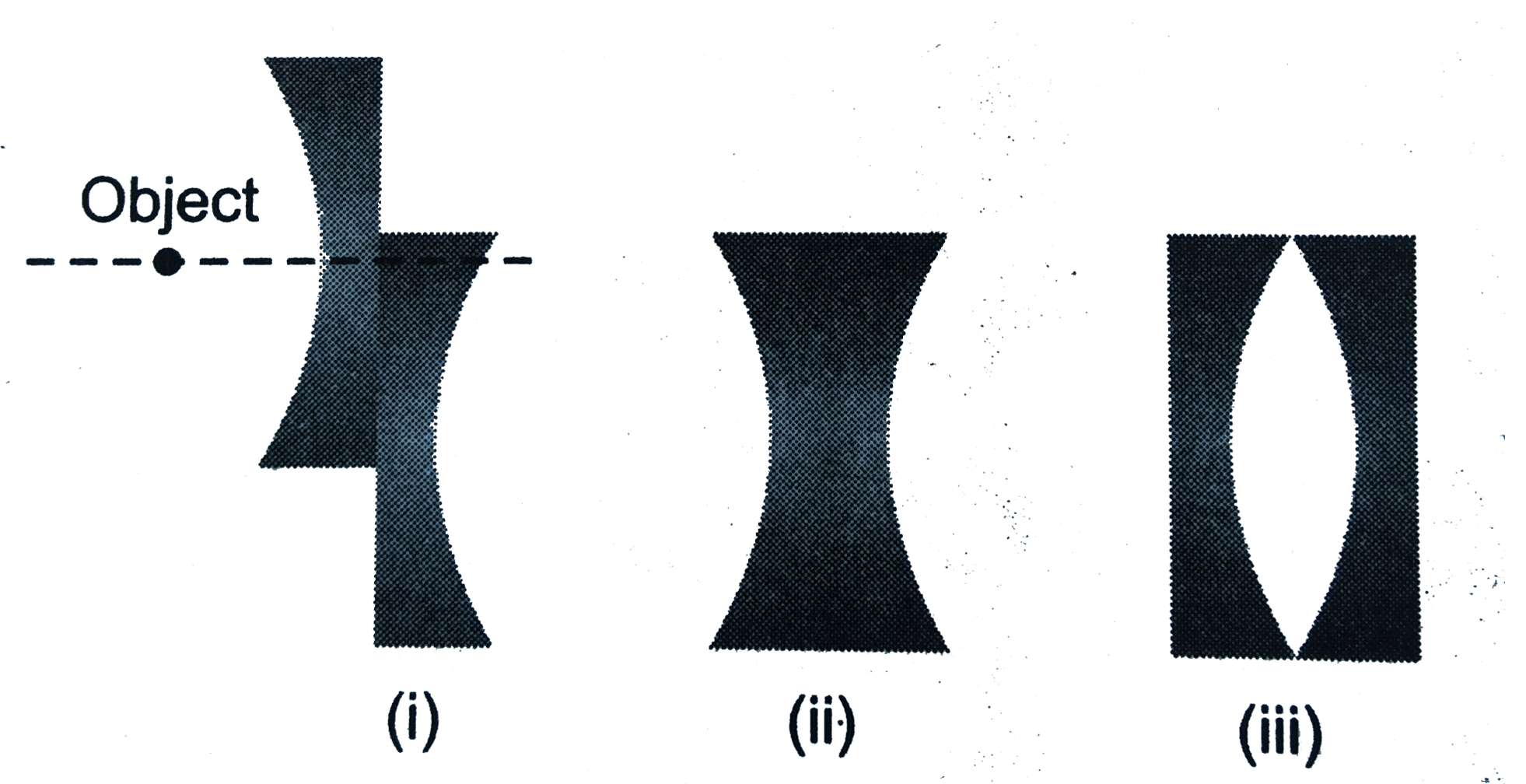
three images will be formed in case (i)
tow inamges will be formed in the case (i)
the ratio of focal lengths in (ii)&(iii) is 1
the ratio of focal lengths in (ii)&(iii) is 2
The correct Answer is:a,c
N//a
Topper's Solved these Questions
- GEOMATRICAL OPTICS BOOK - RESONANCECHAPTER - GEOMATRICAL OPTICS EXERCISE - Exercise-3
79 Videos
- GEOMATRICAL OPTICS BOOK - RESONANCECHAPTER - GEOMATRICAL OPTICS EXERCISE - Advance level Problems
35 Videos
- GEOMATRICAL OPTICS BOOK - RESONANCECHAPTER - GEOMATRICAL OPTICS EXERCISE - Exercise-1
142 Videos
- EXPERIMENTAL PHYSICSBOOK - RESONANCECHAPTER - EXPERIMENTAL PHYSICSEXERCISE - PART -II
10 Videos
- GRAVITATIONBOOK - RESONANCECHAPTER - GRAVITATIONEXERCISE - HIGH LEVEL PROBLEMS
16 Videos
Similar Questions
A symmetric double convex lens is cut in two equal parts by a plane perpendicular to the principal axis. If the power of the original lens was 4D, the power of a cut lens will be
View SolutionA symmetric doule convex lens is cut in two equal parts by a plane perpendiculr to the pricipal axis. If the power of the original lens was 4D, the power of a cut lens will be
View Solution
Knowledge Check
If a symmetrical convex lens of focal length 'f is cut into two parts along the principal axis as shown in the figure, the focal length of each part will be:
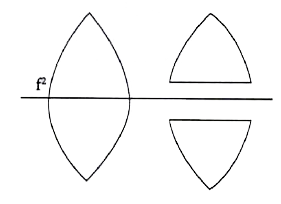 Af2Bf4CfD∞
Af2Bf4CfD∞There is symmetric bi-convex lens and it is cut in two pieces by a plane containing principal axis. If power of the original lens is 10 D then what will be the power of each part ?
A10 DB5 DC20 DD40 DThere is a symmetric bi-convex lens and it is cut in two equal parts by a plane passing through the centre of lens and perpendicular to its principal axis. If power of original lens is 10 D then what will be the power of each part of the lens ?
A10 DB20 DC5 DD2.5 D
A symmetric double convex lens is cut in two equal parts by a plane perpendicular to the principal axis. If the power of the original lens is 4D, the power of a cut lens will be
View SolutionA symmetric double convex lens is cut in two equal parts by a plane perpendicular to the principal axis. If the power of the original lens is 4D, the power of a cut lens will be
View SolutionIn Billet's Lens Arrangement, a convex lens of focal length 50 cm is cut along the diameter into two indentical halves Å and B and in the process a layer C of the lens thickness 1 mm is lost. Then the two halves A and B are put together to form a composite lens. Now, infront of this composite lens a source of light emitting wavelength λ=6000Å is placed at a distance of 25 cm as shown in the figure. Behind the lens there is a screen at a distance 50 cm from it. Find the fringe width fo the interference pattern obtained on the screen.
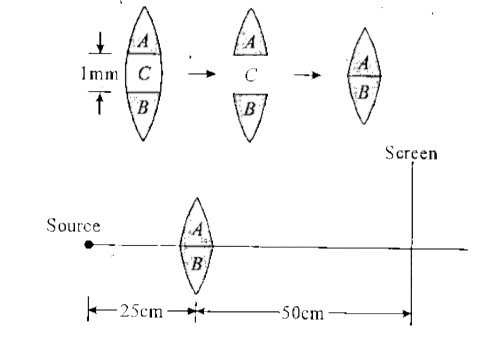
View SolutionIn the figure (i) a thin lens of focal length 10cm is shown. The lens is cut into two equal parts, and the parts are arranged as shown in the figure (ii). An object AB of height 1cm is placed at distance of 7.5cm from the arrangement. The height of the final image will be:
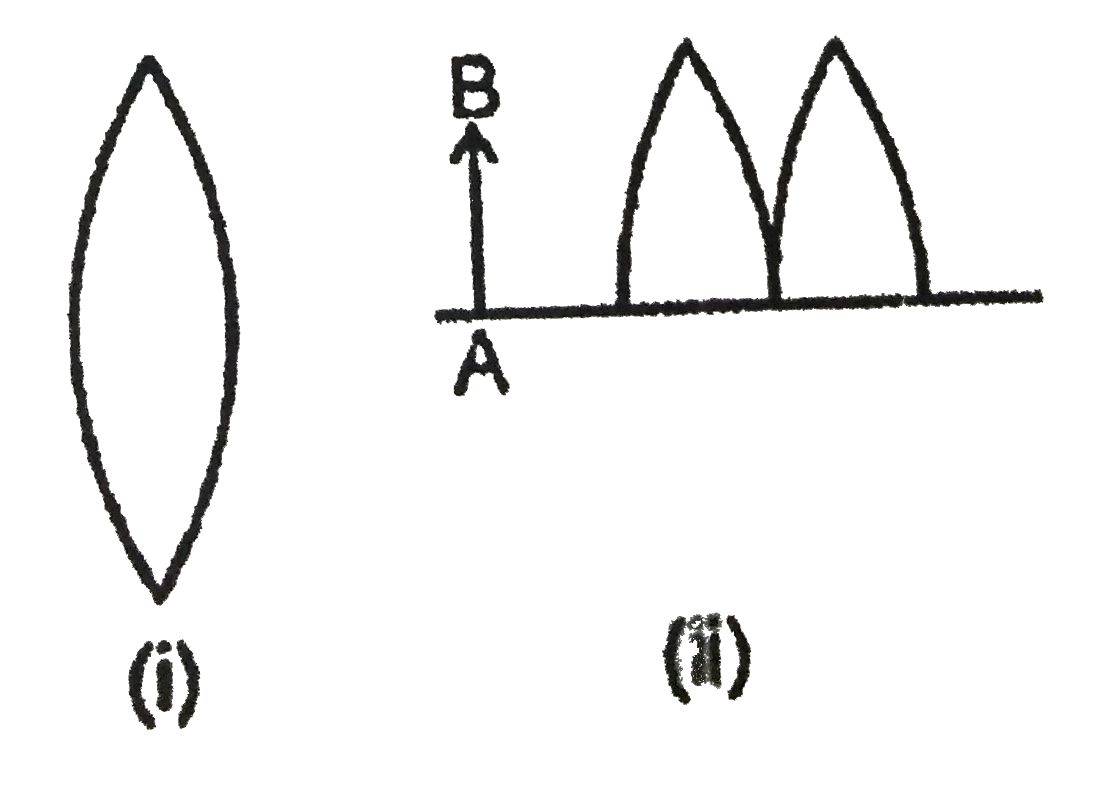
View SolutionIn a system of two dipoles placed in the way as shown in figure :
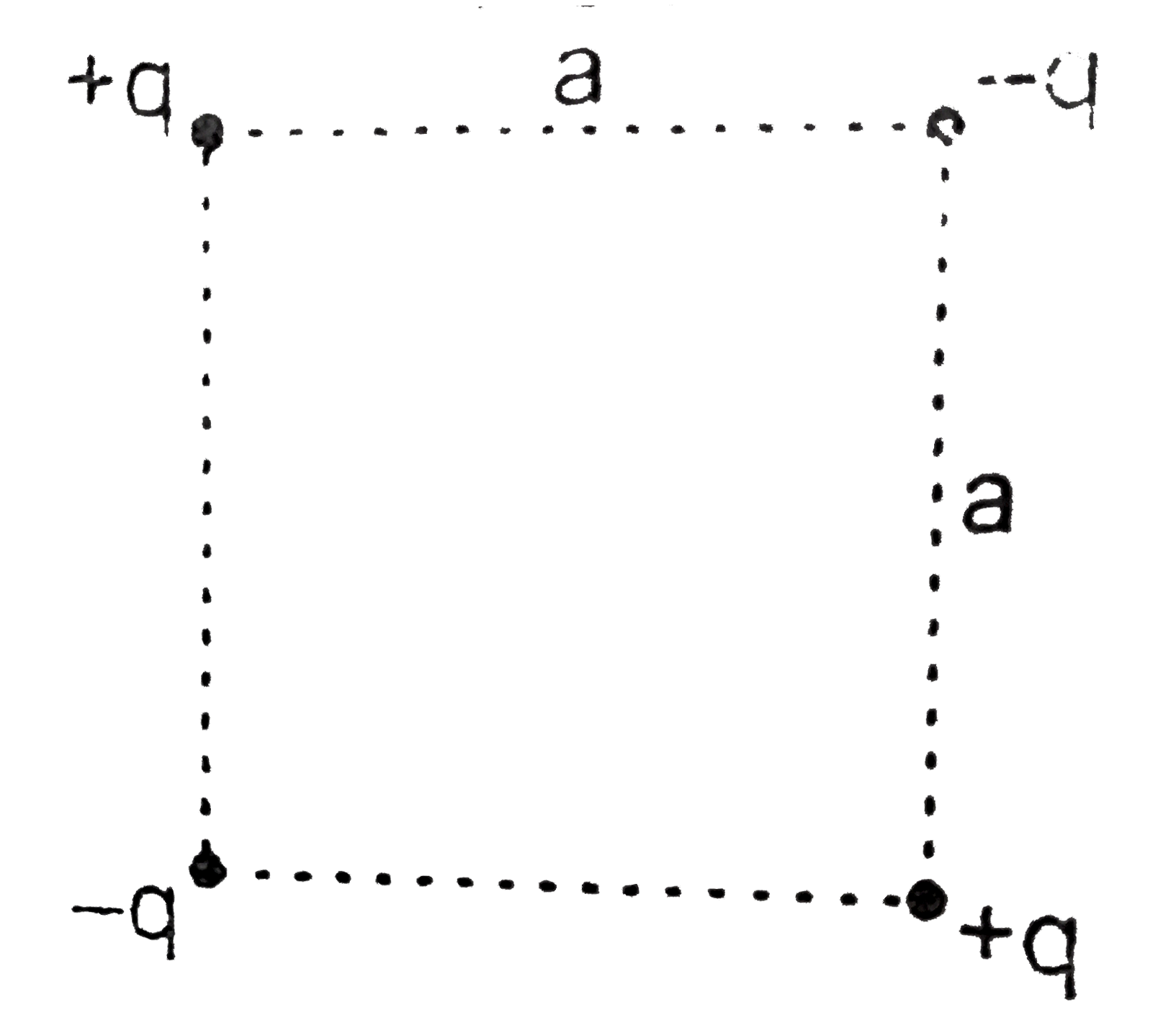
View Solution
